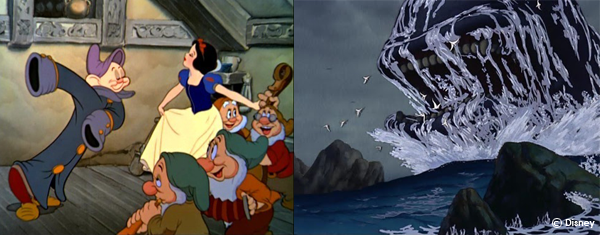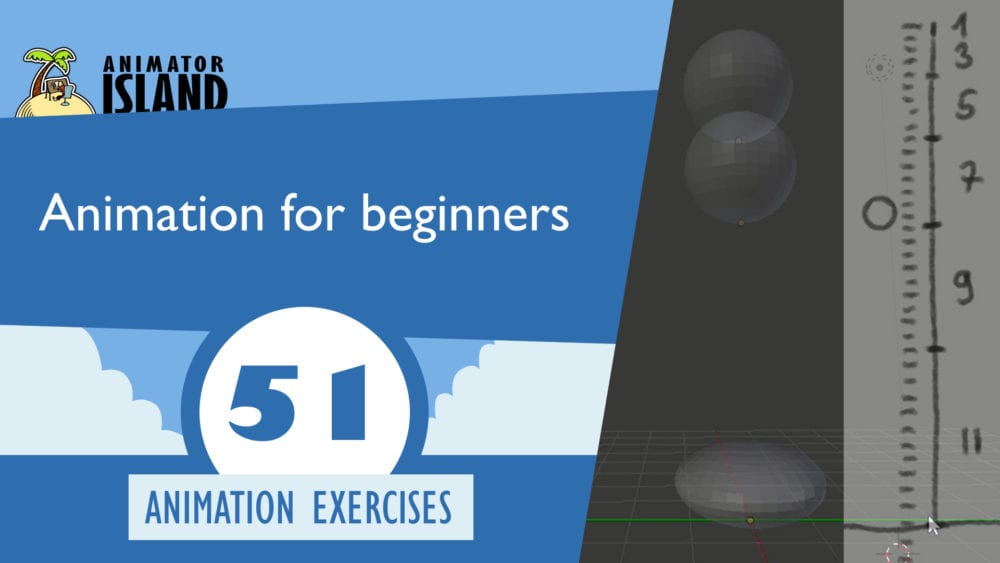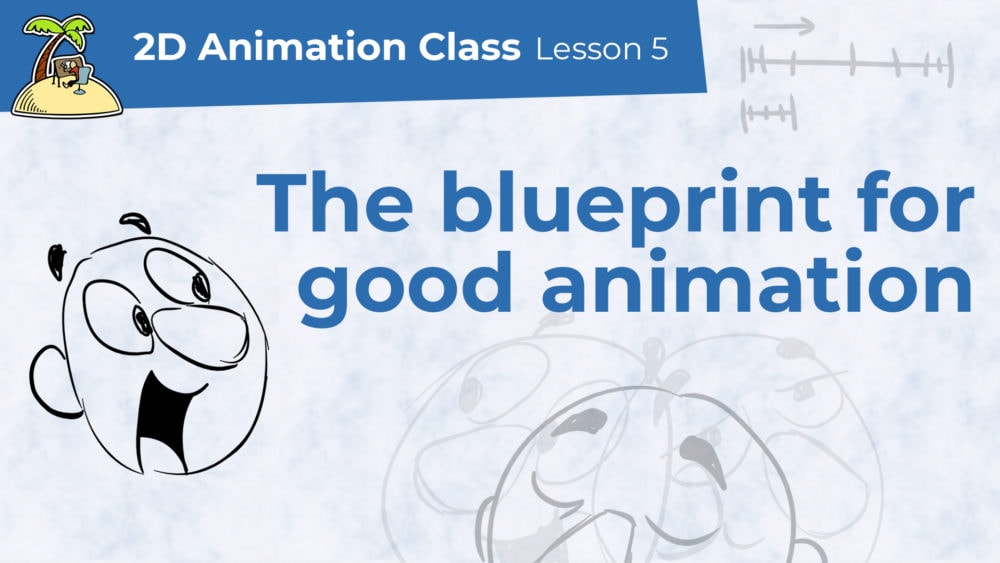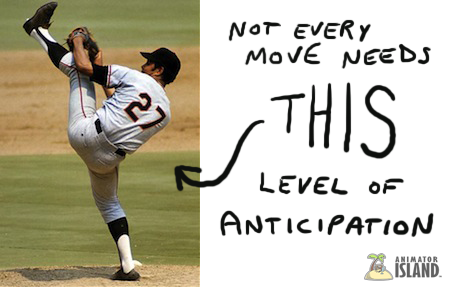51 Great Animation Exercises to Master
Quickest way to improvement? Practice. It’s a simple bit of advice that rings with absolute truth. Articles, tips, mentors, and study will never get you as far as rolling up your sleeves and getting down to work, be it animation or any other skill. Today we’ve compiled a list of exercises, like animation push-ups, that will get your art skills buff and toned.
Maybe you still need convinced of how important the “Art of Doing” is? Look no further than the early days of animation, especially at the Disney studio. Here were a group of animators (before being an animator was even a thing) who HAD no books to read, or websites to visit, or even experienced animators to ask. They learned via the age old art of hands-on training, experimenting and discovering as they went. And some would argue they created some of the greatest animation to ever be seen. Masterpieces like the dwarfs dancing in Snow White or the terror of the Monstro scene in Pinocchio. So be like them! Get out there and do animation!
Some of these exercises you may have done or seen before; some maybe not. Consider doing each of them, even if you did once previously, because returning to an old exercise to see how much you’ve progressed is a very valuable experience.
Level 1 Exercises
(Do not discount their simplicity! Here you have the principals of animation, which all other animation is built on. They are worth your time and effort.)
1. Ball bouncing in place (loop)
Learn how to do this exercise step by step here!
2. Ball Bouncing across the screen
3. Brick falling from a shelf onto the ground
4. Simple Character Head Turn
In our big 2D animation class we share the most important moments of a headturn (but really any animation) in this video.
5. Character head turn with anticipationPreparing a motion by first going into the opposite direction to build up momentum is called anticipation. The anticipat... More
6. Character blinking
7. Character thinking [tougher than it sounds!]
8. Flour Sack waving (loop)
9. Flour Sack jumping
10. Flour Sack falling (loop or hitting the ground)
11. Flour Sack kicking a ball
Level 2 Exercises
12. Change in Character emotion (happy to sad, sad to angry, etc.)
13. Character jumping over a gap
14. Standing up (from a chair)
15. Walk Cycle [oldie but goodie!]
16. Character on a pogo stick (loop)
17. Laughing
18. Sneezing
19. Reaching for an object on a shelf overhead
21. Taking a deep breath [also tougher than it sounds!]
22. A tree falling
23. Character being hit by something simple (ball, brick, book)
24. Run Cycle
Level 3 Exercises
25. Close up of open hand closing into fist
26. Close up of hand picking up a small object
27. Character lifting a heavy object (with purpose!)
28. Overlapping actionDifferent elements of an object or body, come to a stop of different times. This usually happens because an attached, lo... More (puffy hair, floppy ears, tail)
29. Character painting
30. Hammering a nail
31. Stirring a soup pot and tasting from a spoon
32. Character blowing up a balloon
33. Character juggling (loop)
34. Scared character peering around a corner
35. Starting to say something but unsure of how
36. Zipping up a jacket
37. Licking and sealing an envelope
38. Standing up (from the ground)
39. Pressing an elevator button and waiting for it
Level 4 Exercises
40. Character eating a cupcake
41. Object falling into a body of water
42. Two characters playing tug-of-war
43. Character dealing a deck of cards out
44. The full process of brushing one’s teeth
45. A single piece of paper dropping through the air
46. Run across screen with change in direction
47. Sleeping character startled by alarm then returning to sleepy state
48. Opening a cupboard and removing something inside
49. Putting on a pair of pants
50. Opening the “world’s best gift” and reacting
51. Any of the above exercises using a very heavy character/object next to a very light character/object. Enhance the differences the weight change makes!
Things to keep in mind:
- Reading these exercises will do as much for you as reading about push-ups would do for your physical muscles: NOTHING. If you want the benefit, you must animate them. Take a deep breath and just do it.
- Do not forget the famous words of Ollie Johnston: “You’re not supposed to animate drawings [3D models]. You’re supposed to animate feelings.” If a character isn’t thinking, they aren’t alive, and the animation has failed.
- Keep it simple! There is no reason to over complicate any of these exercises. Going back to push-ups, would push-ups be harder if while doing them you also recited the Gettysburg Address? Yes. Would they be any more beneficial? No. Keep things nice and simple and clear.
- Do your best. There is no reason to do these exercises poorly. Give it your all. You don’t have to show anyone, these are for you. You owe it to yourself to try your very best. Something not quite right? Take the time to fix it.
- As always, have fun. Push ups are not fun. Animation is supposed to be. Be joyful in your work!
Have any questions about the exercises above? Leave a comment below and we’ll answer them the best we can! Someone else may be wondering the exact same thing, so you’ll help them too. Likewise if someone is looking for possible exercises, why not share a link to these and give them a hand?











Amazing list…and tough too..
It’s well organized, i was hoping to find more words to put here but you’re danm right: I must start doing them instead..
[saved and printed]
Great list! And really great example for “not sure what to say”. You should do more of the animated examples like that.
Thinking about it! Stay tuned. 🙂
Awesome!
Nice list, lot of good ones on there. Did you get some from the 11 second club?
A few, yep! Plus a couple from other spots online as well as some that I was put through back in animation school a long time ago. Tried to make a nice blend.
There are a ton more on the 11 Second Club list you mentioned, which can be found here if anyone is interested: http://www.11secondclub.com/forum/viewtopic.php?id=4773
(Just remember, you have to DO them, not just read them!) 🙂
thanks for the article. Really Cool.
Totally awesome, and totally gonna be done!!
This is just what i needed! Challenge accepted!
i’ll try to complete the entire list, and post every exercise on this blog http://animacaco.tumblr.com/
Thank you ever so for your article. Really looking forward to reading more. Keep writing.
Just found your website and I’m obsessing over it. I love the articles you post!
THANK YOU FOR THIS LIST!!
I always have such a hard time starting on a new test. I end up making it too long and complicated. I am going to do every test on here and push my skills. I will post them on Youtube and send a link when I get started
MUCH APPRECIATED!
I truly have to ponder just how useful doing such simple things can be. If one wants to be a professional animator at the likes of Pixar or Dreamworks or Lucasfilm we will be doing much more complex items than just bouncing balls or brushing teeth (when was the last time anyone in a film brushed their teeth!)
Instead rather you should practice complex exercises copied directly from actual films so that you will be prepared for the real world. These are all silly school exercises and school is nothing like the industry I think. You never see a bouncing ball in the theater on the silver screen. X.X
They’re useful because you learn the basics and foundations of animation through varied and diverse forms of movement, not because you’re preparing because one day you *might* have to animate someone brushing their teeth.
And I can’t think of many bouncing balls in films, besides maybe Toy Story, but that’s not the point. The point is that the principles behind the bouncing ball are applied to many different forms of movement, such as walks. They are not in the same form, obviously, but the same principles (squash and stretch, timing, spacing) are all there.
Yep, Jonah hit the nail on the head! These exercises guide you through the principals that you can take to ANY scene you might work on. The bouncing ball tunes timing, spacing, and squash and stretch. The tooth brushing one you mentioned will take you through thumb nailing and a range of actions (all part of one larger action) that you will absolutely use when planning whatever story Pixar or Dreamworks throws your way. 🙂
Cool idea about trying your own version of a real movie scene, though, that sounds like a great concept for a future article!
That is the stupidest thing ever. Copy movies because that is what you will be animating? When will you ever animate the exact same thing again? If you animate like Stitch dressed up as Elvis playing guitar you will never use that again becauses every character is totally different! That is why like they are saying you need to know the principals not just only be able to animate a few scenes and nothing else!
How can they be useful? I will say something that is not to be taken as gloating but for credibilaty. As an animator i make sure to take all opportunities to make myself better at the craft. Ive taken a Pixar Masterclass taught by Andrew Gordon and Matthew Luhn. Ive gone to the Pixar benefit where me and a good friend got incredible advice from Mark Walsh and Ronnie Del Carmen. Currently I am taking animation workshops taught by the animators from disney such as Michael Woodside and Marlon Nowe. Guess what? they all said what is said right in this article. Their advice is always keep it short and simple, because you can have a complex leghthy shot and it may be rendered beautifully but it can completely lack in the principles. you have to be able to walk before you can run. In all of these conversations and classes they asked us to always practice the basics because something like a simple vanilla walk cycle can be the hardest thing to ever get right. bringing life to a character doing mundane tasks is always going to be more impressive then focusing on a elaborate scene where the characters are lacking something. Andrew showed us his demo reel that got him into pixar some odd 14 years ago. the piece that caught their attntion was a animated flour sack that was rough and just a pencil sketch. He was embarrassed by it now ( as all animators are after a certain point) but he was told that it was the way he showed the flour sacks thought process and overall timing. And bouncing balls are in everything not literally but figuratively. Most of my current teachers have said that if their assigned shot looks off they animate a quick bouncing ball next to it to see if whether the timing is off or if something is arcing the way its supposed too.
your forgetting that when you animate as a professional in a studio like Disney or Pixar or Dreamworks, you can spend weeks to months on a shot, but all you have to show is a 40 second clip from that work. Animating at that level is a team effort so learn your basics to keep your work cleaner for the next animator who has to work with your shot.
Keep all of that in mind.
Wow, well said! 🙂
When I saw the link to this page I thought it was going to show me how to do it. How to animate a ball bouncing.
There are a bunch of great resources that can walk you through the basic bouncing ball. That might make for a good future article, though, so we’ll add it to the list! Thanks.
The whole community is thankful to you I’m sure! Good to see so many exercises in one spot. Look forward to seeing more.
It never fails to astound me just how lacking people are in practice so having this number of exercises is invaluable to all. As you said now we must simply complete them. Otherwise it will all be fornot.
great list, thanks
I’m really inspired along with your writing abilities and also with all the huge list of exercises. Keep up the nice high quality writing, it’s rare .
This should be in a published book!
Excellent list. Already passed on to my students.
Another one – a little complex, but involves timing, spacing, acting, thinking character, etc: A walk across screen where the pacing changes. For example: moderate walk pace, then a pause for a thought or glance at a text on a phone, slow walk as the thought is processed or the text is read, then a faster walk offscreen as the thought is completed or as a reaction to what the text message said. Three different walks, and transitions between for thinking time. Have at it! :0)
Brilliant thanks! I’ll get on these straight away! Looking forward to the challenges.
I appreciate you sharing this post. Really great.
An intriguing list is definitely worth comment. Time to get animating!
Woah this list is AWESOME! Time to get crackin! Thanks for the list! 😀
I love your blog.
Bookmarked!! I really like your website!
This is my first try… when you begin it you can’t stop…
and when you finish you just want to retry…
here is:
https://vimeo.com/mhauss/videos
Thank you “anyway” Mr. J.K. Riki
TREMENDOUS! Nice work! Awesome to see all of them done in one place. 🙂
I’m amazed, I have to admit. I am very happy I stumbled across this in my hunt for animation excersizes!
Very good list, thank you for posting it.
Friend linked me to this. Fantastic set of exercises, many thanks.
This is awesome, I’m gonna try do every one of them.
Fantástico!
Great list, thanks a lot.
Thank you for posting this list! I found this through the ASIFA group on linkedin.com
I’m going to do every one of this exercises and hopefully I’ll improve.
Wonderful article! This is the kind of info that is meant to be shared around the web.
Thanks =)
Wow wow WOW this is good stuff!!! THANKS!
This is great. I’ve been having fun playing with these.
I started only ever attempting animation once or twice while at school so this is pretty new to me.
But with the combination of this list and this video( http://vimeo.com/80851591 ) I think i’ve made some okay progress.
Just about to start number 10/11(gonna try to combine them).
If anyone wants to have a look at what i’ve done so far you can check it out here:
http://www.aaronsfirststeps.tumblr.com
More than happy to receive any relevant feedback/criticism. 🙂
Thanks again for the list!
Hey, good job with the practice, Aaron! Looks like you’re really blazing through them.
A few thoughts, since you wanted some feedback:
The early exercises are really, really important ones. They are the basis for pretty much all the ones that follow, and the principals and foundations they build are essential if you want to improve in the long run. Because of that, it would be very helpful to you to stick with them until you get the just the way you want.
I see on the flour sack jump you mentioned your awareness of the timing issue. That’s great, when you can see there’s something not quite right, that’s the first and most important step. Now is a good time to go back and figure out what’s not working, and then fix it, before you move on to the next.
In that particular one, there are a few things to tweak. For starters, you’ve got a great anticipation before the jump. That’s something people often overlook, so nice job there! The issues begin when he launches himself into the air, I think. The lines in the middle, to indicate the stretch, are strobing (since they are only on screen for a frame or two) and that’s distracting from the movement. Also I don’t think he’s in the height of his jump long enough. Hold the topmost frame for 2-4 frames longer and see how that changes the timing. It may just be a case of “up-down” too quickly, which is why it seems off.
Another quick tip is to work more roughly than you are now. Animate the inside shapes and forms of the sack before you put the details and final lines on top. It’s much easier to keep track of two simple forms than all the details of the whole flour sack. One of my favorite things to repeat to myself is “Clear, not clean.” What that means is you want to draw clearly, but it can look like a mess so long as it’s CLEAR. Glen Keane is a good example of this method of rough working: https://www.youtube.com/watch?v=ZKal8pS6Qwg
All in all if you keep playing with it, moving frames around and seeing how it changes the overall animation, it will come together and you’ll discover what is and isn’t working so in the next animation you’ll already know a few more things. Good luck with it, and keep at it! I look forward to checking back on your tumblr soon to see how it’s going. 🙂
These are fantastic! I am going to try to do some right nwo.
Hey, I just want to let you know that a few of my friends and me are going to start the 51 exercises and we are going to share it with everybody in this blog http://animationfiftyone.blogspot.com/
Thanks for Such an awesome List.
Amazing! I can’t wait to see how it goes. Looks like you guys have quite a tight schedule! Be careful not to rush things, remember the important thing is to do them right. 🙂
I tweeted out the link via the Animator Island twitter feed, hopefully you can get a few more folks on board as well. Keep us posted on the progress!
That’s super cool Ian! I wish I had time to join you!!
These are terrific. Definitely going to try them all.
This list is genius! I am going to try some of them straight away.
I think this is a really great list. I’ve done a lot of these as assignments in classes and I think they are really useful. The only thing is that I was interested in why in Level 1 you put the flour sack exercises after the character exercises. I would have thought the flour sack would have been better to start with as the inexperienced animator might choose a really complex character design to use and thus become overwhelmed by the exercise. The flour sack also has no face so that’s a few less things to think about when creating the performance. Just switching those exercises could make this list much stronger and even something I could recommend to a beginner animator without any hesitation.
great
Hi there! I just wanted to say thank you for the great list of exercises. I am going to try them all! It will probably take a long time I am just learning.
Its a great post indeed. I like the kind of information provided here.
there is no exercises for fire,water,smoke.why?
That’s a terrific question!
Mostly these exercises focus on either principals and foundation building or character animation specifically. The good news is with proper foundations and principals, effects animation is just a matter of putting it all together! Maybe we can do a top 10 exercises for effects animation in the future, if that would be of interest?
Thanks Vijayan for that question, I also had the same question in my mind. And Also thanks J.K.Riki. for the future plan – “top 10 exercises for effects.” That will be of great use for beginners like me.
yes please make top 10 exercise for fx 😀
I love what you guys are usually up too. This type of article exactly! Keep up the awesome works guys I’ve included you guys on our blogroll. 😉
I’m excited to get to work on this. And you chose good words of encouragement throughout! Might have to hang a few of these on the wall for later motivation (your name credited of course).
Thank you for sharing this with all of us 😀
In the grand pattern of life it’s details like this that make all the difference! Thank you for an excellent list, I will recommend it to every animator I know! Too often we don’t practice we just “create” and that is no good for us!
How do I do these practices in Anime Studio Debut 10 software? And if I cant do it that way, is there a good way to do it on paper?
I’m personally not familiar with animating in Anime Studio, but generally speaking you are going to follow traditional animation workflow. Start by doing thumbnails, then figure out your timing. Do a pose-test (essentially your keyframes timed out) and then begin doing your inbetweens. Keep checking to make sure things are flowing from one frame to the next, and that it has an overall nice feel to it. If something is wrong, change it as soon as you notice!
Hopefully at some point we’ll do a few in-depth tutorials on these exercises in case anyone wants to follow through step by step!
My question is, how many times do you do each exercise? do you do one until you master it or do you do one and than the next regardless of how good it is?(I understand doing a whole level over and over again but should I do each individual exercise before moving on to the next?)
Great question! I don’t think there’s a “right” answer vs. a wrong one here, part of your journey will be learning to develop the intuition of when something is “good enough.” As humans, we’re never going to make something perfect. Animation thrives on getting things to look right vs. having them look perfect. Ask any professional animator and they’ll quickly point out the aspects of their masterful work that they wish was better (even if those of us who think they’re geniuses never notice the small flaws).
I would DEFINITELY recommend that at least in the early exercises you do several attempts until you feel you’ve really got a great grasp of the principals they’re teaching. So, for example, with the bouncing ball you want to make certain your “final result” is consistent, feels right, has proper timing and squash and stretch, and is really spot-on overall. The early going is not the time to take shortcuts, because everything builds on these first few exercises. Give them the time they deserve.
Later, as you progress through the list, you’ll have better foundations already built so you can get away with not staying on one until it’s really polished, should you decide to. You can also jump around and do them out of order at that point. Above all you just don’t want to rush the process early on, because that is where you will figure out the things that will take your future animations from average to good, and good to amazing.
Good luck with them, and if you ever need thoughts on any just post them online and leave a link! We’d be happy to check them out and give suggestions. 🙂
LOVE these. Thank you! Would also love to see more animated examples if anyone has done these!